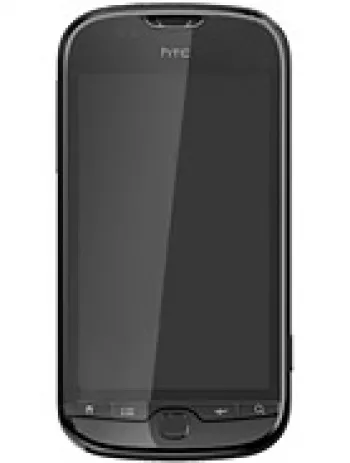
Overview of HTC Titan
The HTC Titan, launched in late 2011, was positioned as a high-end smartphone for its time, heralding HTC's continued partnership with Microsoft through the Windows Phone operating system. The phone's primary selling points were its large display, capable camera system, and robust build quality.
Design and Build
The HTC Titan boasted dimensions of 131.5 x 70.7 x 9.9 mm and weighed 160 grams. This made it sizable and substantial, reflecting its positioning as a premium device. The design was accentuated by its Carbon Gray finish, offering a sleek, professional look. The device utilized a Mini-SIM card configuration and featured a removable 1600 mAh lithium-ion battery, which provided decent longevity for the smartphone activities of its era.
Display
The standout feature of the Titan was undeniably its screen. The phone flaunted a 4.7-inch S-LCD display, which was considered expansive at the time of its release. It offered a resolution of 480 x 800 pixels, providing a pixel density of approximately 199 ppi. While modern standards might view the pixel density as low, during its release, it was more than adequate for everyday tasks and multimedia consumption.
Hardware and Performance
Powering the HTC Titan was the Qualcomm MSM8255 Snapdragon S2 chipset featuring a 1.5 GHz Scorpion CPU and an Adreno 205 GPU. While not groundbreaking, this combination offered sufficient performance for most applications available on the Windows Phone platform. The phone included 16GB of internal storage and 512MB of RAM, although it lacked expandable storage options, which could be seen as a limitation for power users.
Camera Features
The Titan was equipped with an 8 MP rear camera with autofocus and a dual-LED flash, capable of capturing 720p video. It performed well in good lighting conditions, with reasonable low-light performance aided by the LED flash. The device also offered a 1.3 MP front-facing camera, making it suitable for basic video calls and selfies, a feature that was gaining popularity during that period.
Software Experience
Running on Microsoft Windows Phone 7.5 Mango, the Titan offered a distinctive user interface compared to its iOS and Android counterparts. The operating system was praised for its fluidity and unique tile-based interface. It offered built-in services like Bing Maps, which utilized the phone's GPS and A-GPS capabilities, providing reliable navigation and location services.
Connectivity
The device supported GSM and HSPA technology, providing 3G speeds up to 14.4 Mbps. Connectivity options included Wi-Fi 802.11 b/g/n, Bluetooth 2.1 with A2DP and EDR, and microUSB 2.0 for data transfer and charging. The inclusion of stereo FM radio with RDS was a bonus for users who enjoyed listening to radio broadcasts on the go.
Audio and Multimedia
The HTC Titan included a loudspeaker and a 3.5mm audio jack, ensuring compatibility with most headphones and external speakers available at the time. Audio output, whether from the loudspeaker or through headphones, delivered reasonable sound quality, which was typical for phones of its era. The device handled media playback adequately, with the large display enhancing video and image viewing experiences.
Sensors and Special Features
A variety of sensors, including an accelerometer, gyroscope, proximity sensor, and compass, were integrated into the device to enrich user interactions and app functionality. These sensors enabled features like automatic screen rotation and augmented reality applications, expanding the device's usability in innovative ways.
Battery Performance
The 1600 mAh battery, while not the largest, offered respectable standby and talk-time performance. Users could expect up to 360 hours on standby in 2G and 460 hours in 3G networks. Talk time was recorded at approximately 11 hours and 50 minutes on 2G and up to 6 hours and 50 minutes on 3G, making it competitive for its time.
Market Position and Conclusion
At its release, the HTC Titan was priced around 140 EUR, placing it in the higher tier of smartphones. It was well-received for its design, display size, and camera capabilities. However, the closed nature of the Windows Phone ecosystem and lack of expandable storage were viewed as limitations. Despite its discontinuation, the HTC Titan remains a significant piece in the history of smartphones, showcasing a pivotal time when manufacturers experimented with larger form factors and diverse operating systems.
Key Features of HTC Titan
- Support for GSM and HSPA networks
- High-speed HSPA 14.4/5.76 Mbps connectivity
- Slim design with dimensions: 131.5 x 70.7 x 9.9 mm
- Lightweight at 160 g
- Large 4.7-inch S-LCD display
- Powered by Microsoft Windows Phone 7.5 Mango
- 1.5 GHz Scorpion CPU for fast processing
- Qualcomm MSM8255 Snapdragon S2 chipset
- Adreno 205 GPU for improved graphics
- Decent 16GB internal storage with 512MB RAM
- 8 MP main camera with autofocus and dual-LED flash
- 1.3 MP front-facing camera
- Wi-Fi 802.11 b/g/n and DLNA support for easy connectivity
- GPS with A-GPS and Bing Maps for navigation
- Stereo FM radio with RDS for entertainment
- Comprehensive sensor range including accelerometer, gyro, proximity, and compass
- Removable 1600 mAh Li-Ion battery
Disadvantages of HTC Titan
- Display resolution is relatively low at 480 x 800 pixels, resulting in a lower pixel density (~199 ppi).
- No expandable memory card slot, limiting storage options to internal 16GB.
- Older OS version, using Microsoft Windows Phone 7.5 Mango, which may lack support for modern applications and updates.
- Front camera has a low resolution at 1.3 MP, resulting in poorer quality selfies.
- Bluetooth version 2.1 is outdated, potentially limiting compatibility with newer devices and features.
- Relatively small battery capacity of 1600 mAh, which might not provide sufficient battery life for heavy users.
- Phone weighs 160 g, which may be considered heavy compared to newer models.
- The device has been discontinued, potentially limiting access to support and spare parts.
























View Also
More Phones
All Rights Reserved +14266 Phones © Mobilawy 2025

























